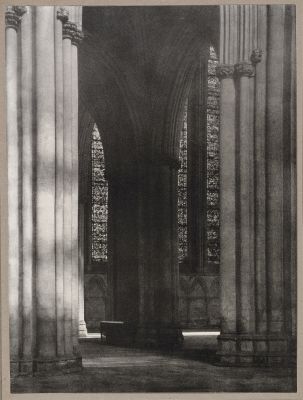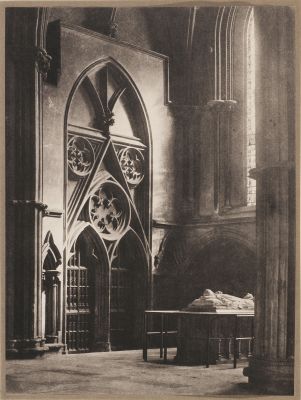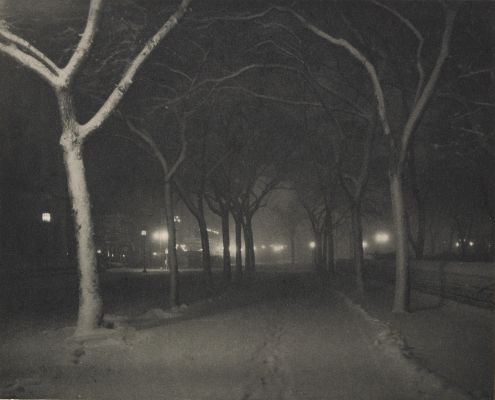
Title
Height and Light in Bourges CathedralArtist
Evans, Fredrick (British, 1853-1943)Publication
Camera Work IVDate
1903Process
PhotogravureAtelier
J.J. Waddington, LondonImage Size
7.7 x 7.1 cm
“Tireless and fastidious in his work,” Evans’ soul intent was to propel viewers through his luminous, looking-glass prints into feeling as if they were actually inside Wells Cathedral. [1]
Frederick Henry Evans was born in 1852. He was a bookseller in London until 1898 when he retired to devote his full time to photography. From about 1895 he took portraits of a number of literary and artistic friends including Aubrey Beardsley, whom he launched on his career as an illustrator; William Morris for whom he photographed Kelmscott Manor; and George Bernard Shaw, a close friend. Evans was the foremost architectural photographer of his day. He began to photograph English cathedrals in 1896 and he also photographed many of the famous French chateaus and cathedrals. Evans was a member of the Linked Ring and an innovator in exhibition presentation. He was the first Englishman to depart from the floor to ceiling presentation concept and display prints singly in their own environment. He was a vocal defender of pure technique and the "straightest of straight" photography. A master of the platinum print, he gave up photography when platinum paper became unobtainable after World War I. Evans was the first English photographer to become well known in America, exhibiting 120 prints in Boston in 1897, publishing in Camera Work in 1903, and exhibiting at the Little Galleries in 1906. Evans died two days before his 91st birthday at his home at Acton, London. [2]
Reproduced / Exhibited
Newhall, Beaumont. Photography, Essays & Images: Illustrated Readings in the History of Photography. New York: Museum of Modern Art, 1980. p. 181
References
[1] Newhall, Beaumont. Photography, Essays & Images: Illustrated Readings in the History of Photography. New York: Museum of Modern Art, 1980 p. 181
[2] Aperture, Inc. Camera Work : A Critical Anthology. Edited by Jonathan Green, Aperture, Inc., 1973.







